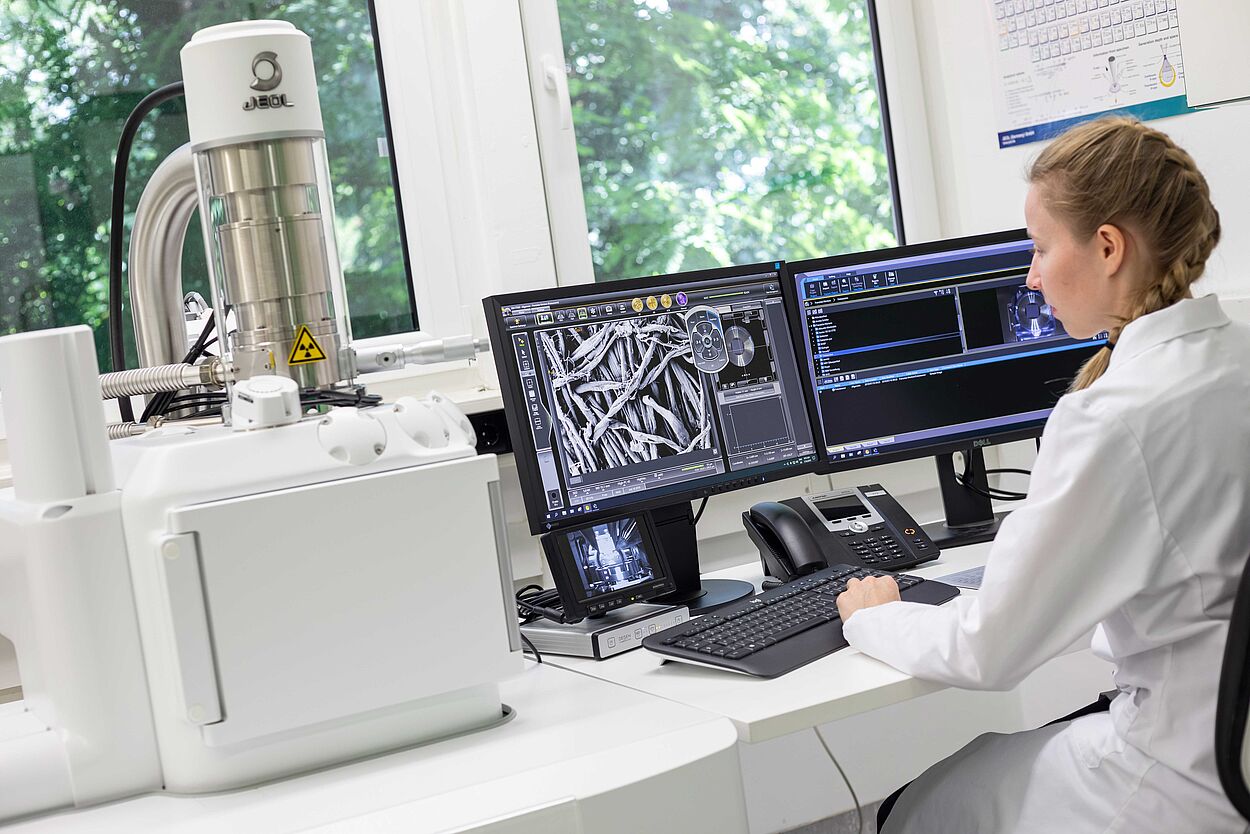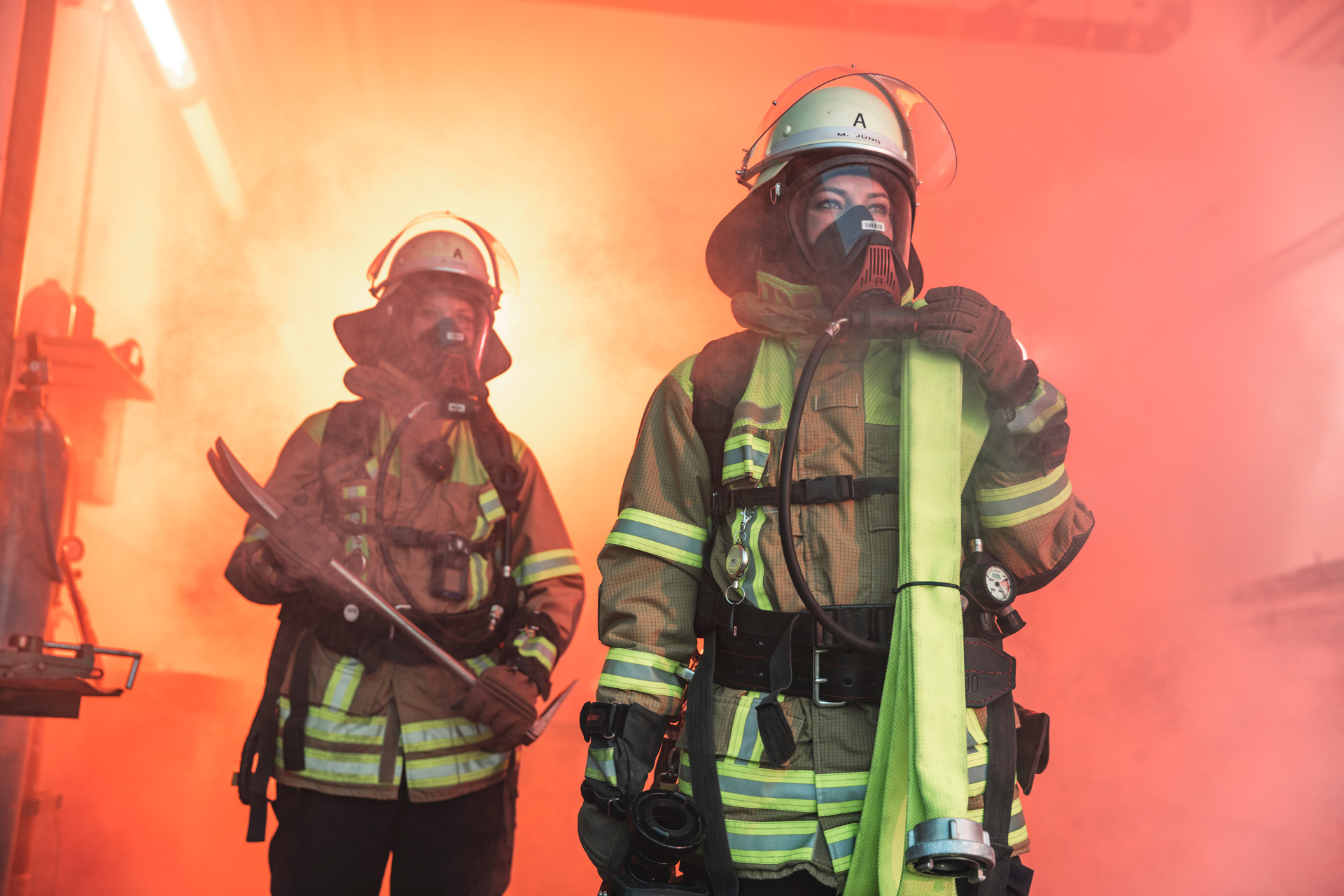Due to their proven carcinogenic properties, the fire-resistant mineral fibres grouped under the generic term asbestos are prohibited by law. Asbestos fibres penetrate deep into the lungs when inhaled and cause damage to health after many years.
Even small amounts of asbestos are enough to cause considerable contamination on textiles. In fires in older buildings built in 1993 and earlier, for example, there is a high risk of released asbestos fibres contaminating the protective clothing of firefighters.
Objective evidence that PPE and other textiles are contaminated with harmful asbestos provides you with a sound basis for deciding whether to have expensive protective equipment such as firefighters' clothing professionally reprocessed to remove existing contamination or whether asbestos has been successfully removed after reprocessing has been carried out.
How and what do we test?
The scanning electron microscope (SEM) enables very detailed and high-contrast magnifications that are up to 1000 times higher than with light microscopes. With the help of SEM technology, we analyse unwashed or reprocessed textile materials and PPE such as firefighters' clothing non-destructively for asbestos fibres for you. To do this, we use adhesive strips to take samples from areas where contamination is likely to occur - e.g. in the shoulder and arm area of textile PPE.
If we detect asbestos fibres in the tested samples, we explicitly mention this in our test report for you so that you can take the necessary steps for professional reprocessing or decontamination if necessary.

Apart from testing for asbestos residues, we also offer the following services based on SEM microscopy (including surface element analysis, EDX):
- Quality assurance, e.g. in the context of analysing damage claims
- Surface analysis, e.g. with regard to finishes and coatings
- Comparison of new and washed samples
